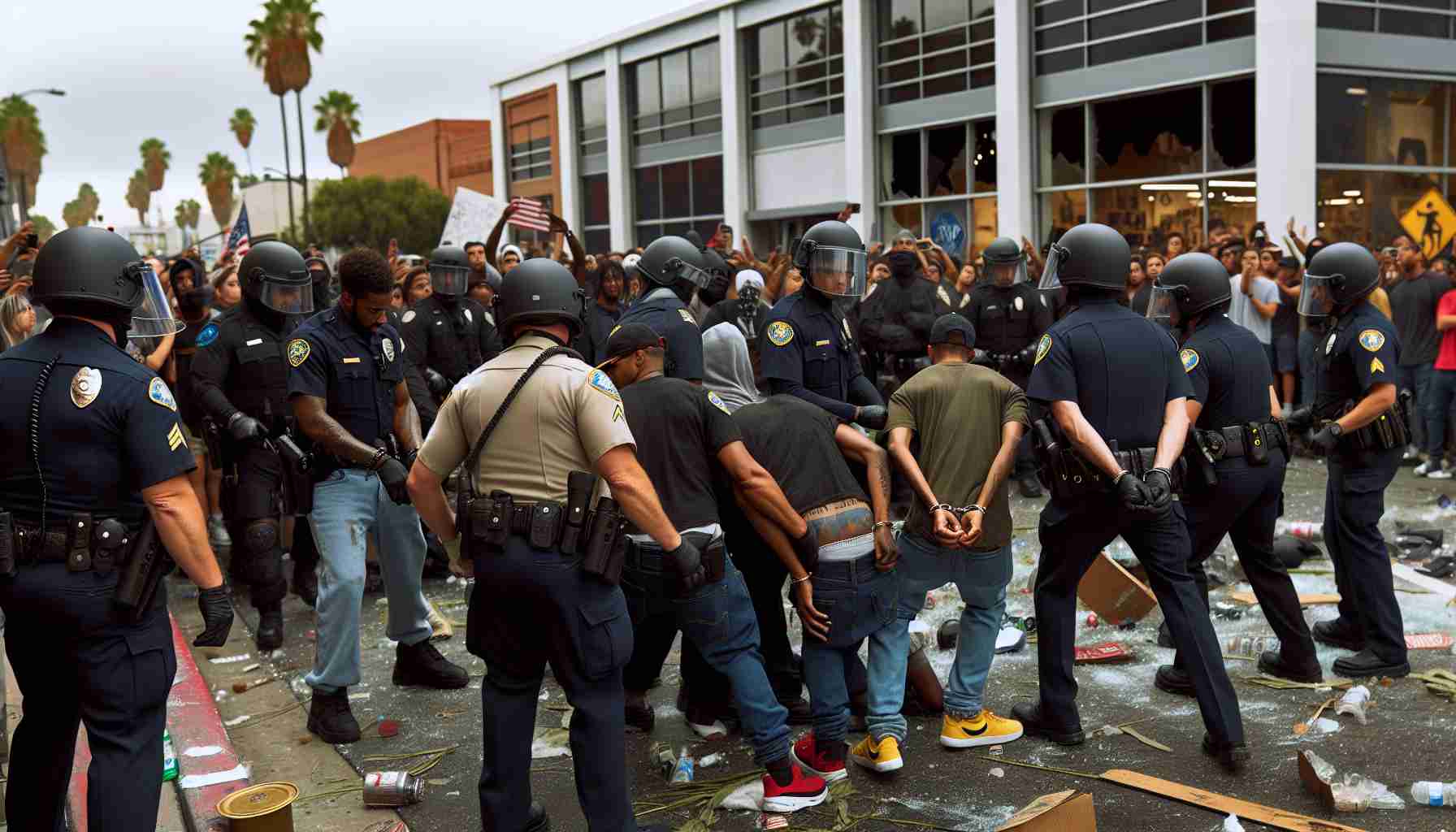In a significant incident at the Stanford Shopping Center, police apprehended two individuals connected to a vandalism event during a protest. Reports indicate that on Monday, October 7, a 26-year-old female demonstrator was seen defacing storefronts with spray paint, targeting the Apple Store and Sephora.
As the situation escalated, she attempted to escape by entering a car driven by a 25-year-old man. In a chaotic scene, as law enforcement tried to prevent their getaway, the driver inadvertently injured an officer by closing the car door on his hand, then running over his foot in their failed escape attempt.
Authorities swiftly identified and arrested the woman later that night in Berkeley with assistance from local police. She faces multiple charges including felony resisting arrest, conspiracy, and vandalism, and was taken to Santa Clara County Main Jail. The man was arrested a few days later in El Sobrante, also facing charges including felony assault and conspiracy, leading to his detention in Santa Clara County as well.
The damage attributed to the vandalism is estimated to exceed $1,000. Meanwhile, police reported receiving a complaint from a counterprotester regarding an Israeli flag being taken by an unknown individual during the same event, which is under investigation as a possible hate crime, although no direct connection to the arrested individuals has been established. Authorities encourage anyone with information to come forward.
Understanding Protest Dynamics: Tips and Life Hacks for Peaceful Demonstrations
In light of recent events such as the vandalism during a protest at the Stanford Shopping Center, it becomes crucial to explore ways to ensure that demonstrators can express their views peacefully and effectively. Here are some tips, life hacks, and interesting facts to consider when participating in or organizing a protest.
1. Plan Ahead: Before attending a protest, familiarize yourself with the route and location. Knowing where to find gathering spots or exits can help maintain organization and safety.
2. Go in Groups: Safety in numbers is essential. Attending protests with friends or like-minded individuals can create support networks and deter potential incidents.
3. Wear Comfortable Clothing: Protests can require significant standing or walking. Opt for comfortable shoes and clothing to help you endure long hours while maintaining your energy.
4. Stay Informed on Legal Rights: Understand your rights as a protester. Knowing the laws regarding public demonstrations can help you navigate the situation better and stay within legal boundaries.
5. Practice De-escalation Techniques: If hostility arises, knowing how to de-escalate tense situations can prevent conflicts from escalating. Use calm language and gestures to diffuse potential confrontations.
6. Have a Communication Plan: Ensure you have a way to communicate with friends or fellow protesters if separated. Designate a meeting spot or use mobile devices to stay connected.
7. Bring Essential Supplies: Carry essentials such as water, snacks, a charged phone, and first-aid supplies. These can make a significant difference in maintaining your well-being during lengthy protests.
8. Record and Document: If you are in a situation where clashes may happen, having a phone to document the event can provide evidence if misunderstandings arise. However, be sure to respect others’ privacy while doing so.
Interesting Fact: Protests have been a part of democratic societies for centuries. They serve as vital platforms for citizens to express their grievances, inform public opinion, and influence legislative change.
9. Engage in Dialogue: After the protest, consider engaging in discussions about the issues at hand. Understanding different perspectives can enrich your viewpoint and strengthen community ties.
10. Follow Up After the Event: Stay informed on any developments regarding the issues raised in the protest. Follow relevant organizations or social movements to keep the momentum going.
By employing these tips and strategies, you can contribute to a more constructive and peaceful demonstration environment. For those interested in further advocacy or activism, consider exploring additional resources offered by community organizations. For more information on local events or demonstrations, visit link name.
